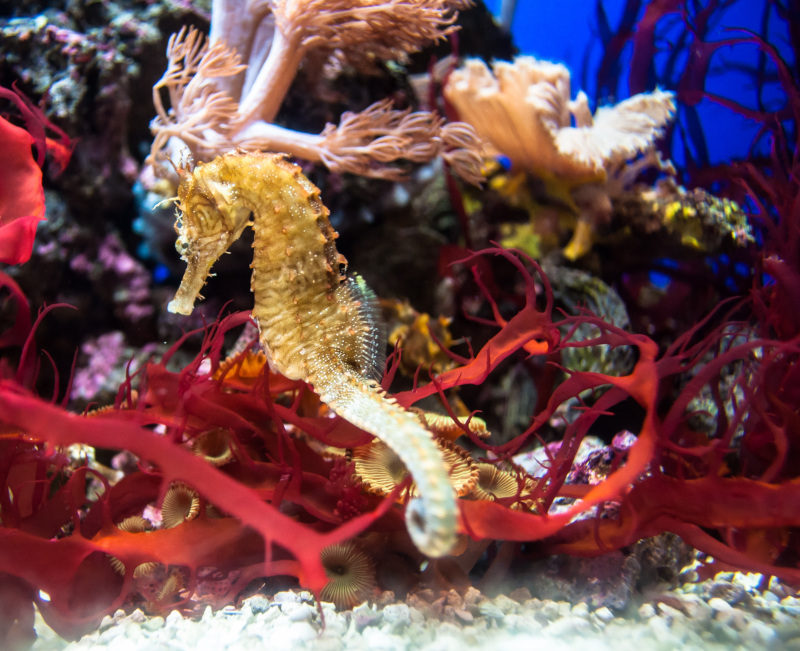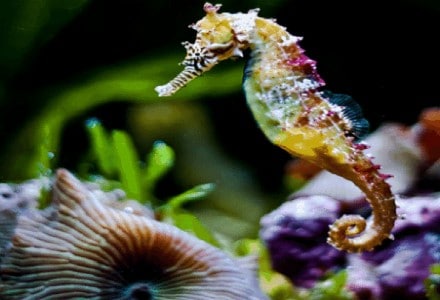
Seahorse Facts
- Most notably, the remarkable and fascinating Seahorse easily ranks as one of the most unusual fish species in the ocean. Its resemblance to horses is arguably a remarkable coincidence. But, the term applies to many species in a specific genus.
- Currently, researchers know of at least 45 species fitting within the genus. The reason for the uncertainty lies in the fact that many scientists disagree over the classification of several potential members of the group.
- Furthermore, a rather common misconception also currently exists about the mating habits of this unique genus. Many people believe that individuals mate for life. However, for the moment, no current data supports this belief.
- But, individuals of all species do practice extremely long courtship rituals which remains most unusual among fish. These rituals may last for as long as several days. This actually constitutes a significant portion of its rather short lifespan.
Related Articles
Lumpfish Pinecone Fish Stonefish
Seahorse Physical Description
First of all, given the fact that so many different types of Seahorse exist around the world, physical variations naturally occur. For one, members of the group vary widely in sheer size. That’s because these members range in size from 0.6 in (1.5 cm) in length to 14 in (35.5 cm).
In addition, members of this incredible group qualify as bony fish, yet none of them develop scales. Further, the skin remains quite thin as it grows over a series of bony plates. These marvelous fish also manage to swim upright, due to the use of a prehensile tail. It also has small dorsal and pectoral fins, to aid in maneuvering.
Additionally, the various species of the group understandably present a wide range of base colors. However, this amazing creature also has the ability to change color at will, for camouflage. Finally, it also has the incredible ability to grow and retract small spines at will.
- Kingdom: Animalia
- Phylum: Chordata
- Class: Actinopterygii
- Order: Syngnathiformes
- Family: Syngnathidae
- Genus: Hippocampus
Seahorse Distribution, Habitat, and Ecology
Firstly, the many various types of Seahorse live in both temperate and tropical oceans around the world. Secondly, most member species also prefer to inhabit highly sheltered areas. As a result, the small animal most commonly appears in areas of seagrass, coral reefs, estuaries, or mangrove forests.
Also, the overall diet of this truly remarkable animal consists almost exclusively of various tiny crustaceans. In addition, the Seahorse typically hunts as a rather patient ambush predator. Not only that, but individuals quite commonly feed 30-50 times per day.
Additionally, its breeding habits appear to be quite remarkable, as well. After mating, the female actually deposits the eggs in a pouch on the body of the male. He then carries the eggs until they hatch. Finally, lifespans of the various species average between 1-4 years.
Species Sharing Its Range
Jawfish Black Sea Hare Panda Dolphin
Check out our other articles on 6 Incredible Asian Islands, Clymene Dolphin, Belogradchik Rocks, Queen Alexandra Birdwing, Greater Sage Grouse, Living Stones, Tiger Rattlesnake

